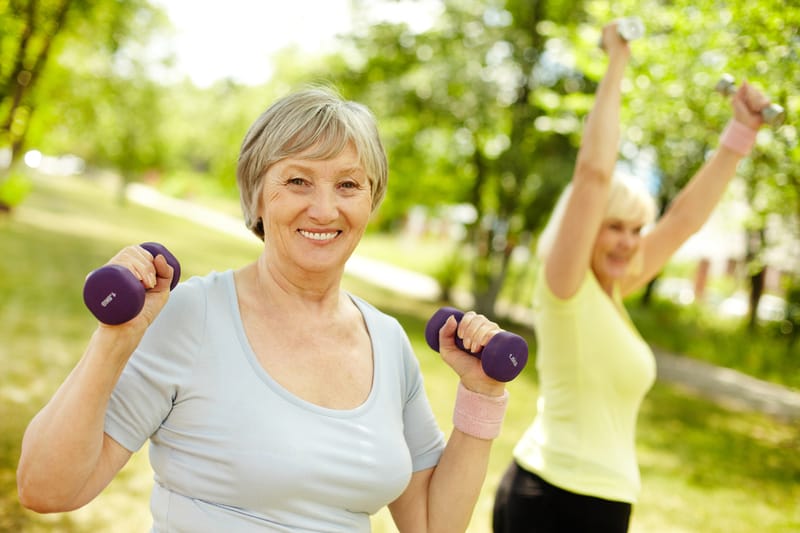Neck and shoulder pain can be debilitating, but acupressure can bring pain relief. This list details the location, indication, and functioning of 5 acupressure points for neck and shoulder tension. Acupressure provides a great way to relax your neck muscles naturally and is one of the fastest ways to relieve neck pain.
Can Acupuncture Help With Neck And Shoulder Pain?
Yes, a 2018 study published in the Journal of Pain Research examined a total of 164 patients with a primary complaint of one-sided shoulder pain. Individuals were randomly assigned to receive motion style acupuncture therapy (MSAT) plus minimal conventional acupuncture therapy (CAT), CAT plus minimal MSAT (mMSAT), MSAT plus CAT, or mMSAT plus mCAT for six weeks in a 1:1:1:1 ratio. They measured the efficacy based on the change in shoulder pain intensity, as measured using a visual analog scale.
The study concluded that after 18 weeks of treatment, pain and joint functions are improved more with MSAT than with mMSAT or CAT in patients with shoulder pain.
You can also try acupuncture together with cupping to relieve the pain. Read on to find out what is dry needling and cupping.
Which Acupressure Points Relieves Neck Pain?

A 2010 study in the Journal of Evidence-Based Complementary Alternative Medicine sought to investigate the effect of acupressure at local (LP) and distal points (DP) in females with chronic neck pain. 33 women were assigned to one of three groups: the LP group received acupressure at GB-21, SI-13, and SI-15. The DP group received acupressure at distal acupuncture points LI-4, LI-10, and LI-11.
The study found that acupressure on both the LP and DP significantly improved pain conditions and that acupressure only on the LP affected the autonomic nervous system while different acupuncture points have different effects based on their location.
Massages can also help reduce the tension in your muscles that are causing your stiff neck.
Acupoint: LI-11 (Other Names: Large Intestine-11/Qu Chi/Pool at the Crook)
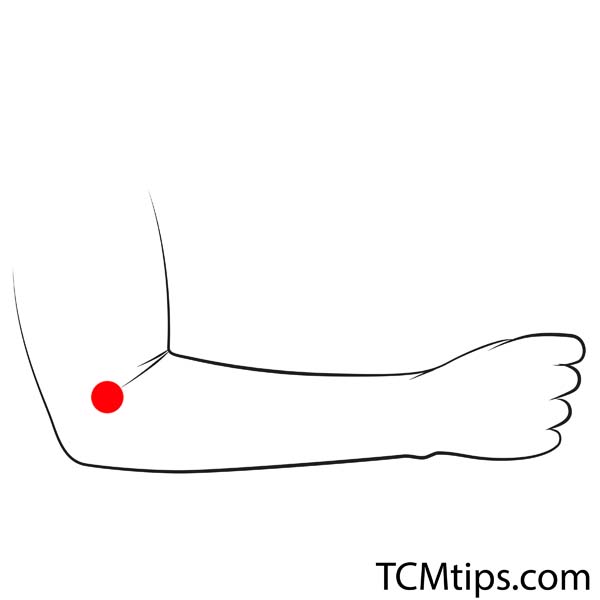
LI-11 is located at the elbow. You can locate it by bending your arm and looking for the end of the crease on the outer side of your bent elbow.
In addition to being one of the most useful acupressure points for neck tension, LI-11 is also indicated for shoulder stiffness, headaches, eye irritation, and rough skin. It’s also beneficial in acupuncture and tennis elbow.
It functions by clearing heat, cooling blood, resolving dampness, expelling exterior wind, regulating Qi and blood, and activating the meridian.
Acupoint: Bl-10 (Other Names: Urinary Bladder-10/Tian Zhu/Celestial Pillar)
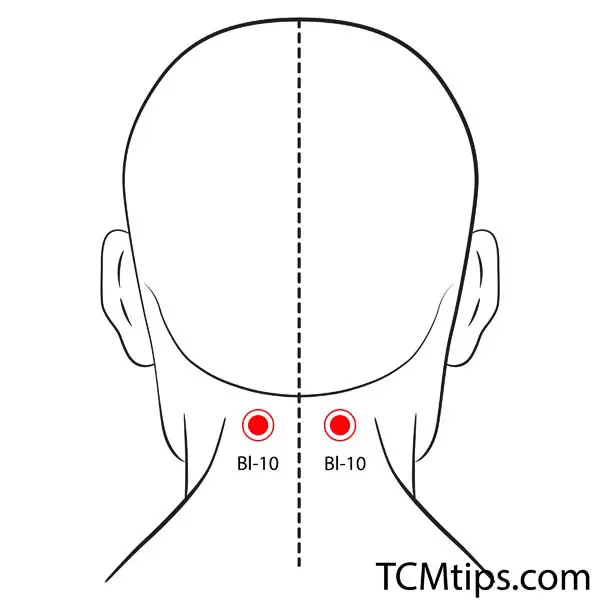
BL-10 is located on the neck, on the outside aspect of the trapezius muscle, 1.3 cun from the centerline and .5 cun below the hollow under the occipital protuberance (the bump at the base of your skull. 1 cun is equal to 1 anatomical inch, which is equal to the width of your thumb tip.

BL-10 is also indicated for stiff shoulders, stuffy eyes, runny nose, and stuffy nose. It is also one of the most useful acupressure points for the eyes.
To stimulate BL-10, place your fingers on the left and right streaks on the back of your neck and lift your fingers up from there. Gently massage it directly with your finger for 30 seconds or before you take a deep breath.
Acupoint: TE-17 (Other Names: Triple Energizer-17/Yi Feng/Wind Screen)
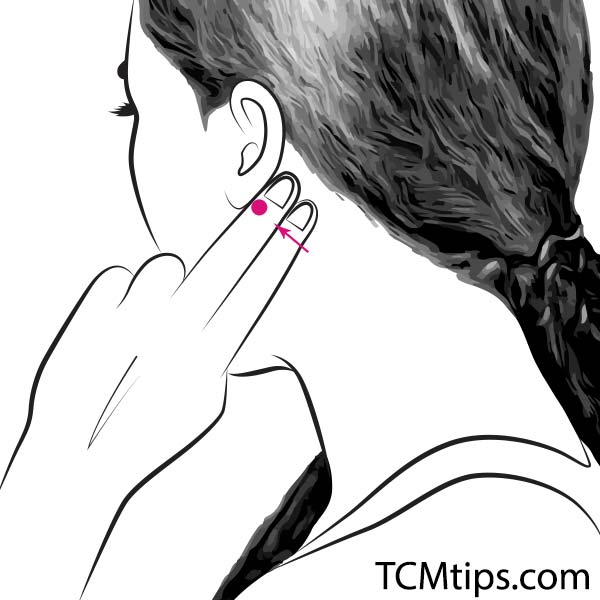
TE-17 is located behind the ear lobe, in the depression between the mastoid process and the angle of the mandible. You stimulate it by placing the middle fingers of both hands on the left and right acupoints and slowly press with enough force to feel comfortable. The neck is a delicate area where nerves are concentrated, so be careful not to push it too hard.
In addition to being one of the great TMJ acupressure points, it is the main point to treat ear conditions such as tinnitus and deafness, as well as facial paralysis, lockjaw, and toothache. It is often the point of choice for local ear problems.
It functions by benefitting hearing and vision and dispersing wind and clearing channels.
Where Are The Pressure Points For Shoulder Pain?
A 2018 systematic review in the Frontiers in Neurology examined the effects of acupuncture on the recovery outcomes of stroke survivors with shoulder pain. The use of acupuncture to manage shoulder pain after a stroke is believed to free the blockage of energy flow and produce analgesic effects. Researchers searched English and Chinese study databases dated between January 2009 to August 2017. There were 29 randomized controlled trials found in this time frame.
Researchers concluded that most studies had a substantial risk of bias. Although most studies reviewed concluded that conventional and electroacupuncture could be effective in the treatment of post-stroke shoulder pain, researchers pointed to the very high potential for bias and recommended that more research in this area is needed, particularly with standardized acupuncture treatments modalities, endpoint assessments, and blinding of treatments.
Acupoint: LI-14 (Other Names: Large Intestine-14/Bi Nao/Upper Arm)
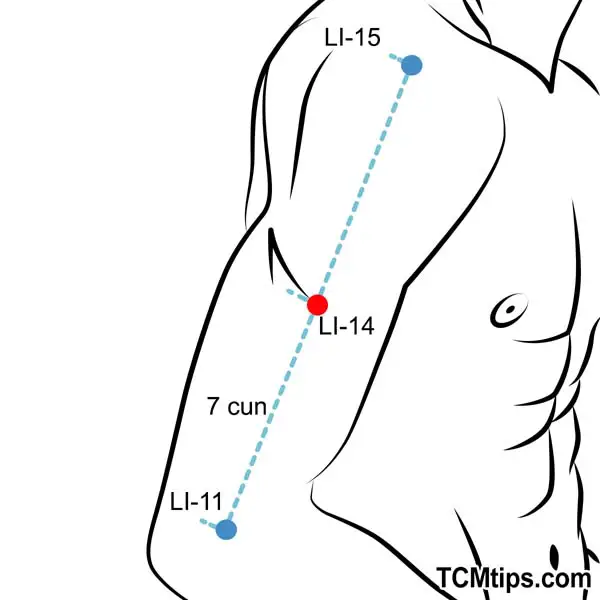
LI-14 is located on the lateral side of the upper arm, just over and in front of the insertion of the deltoideus muscle. LI-14 is located above 7 cun from LI-11. You can find it by placing one hand on your hip and bending your arm in a V shape to make it easier to see the position of the deltoideus muscle. When stimulating this as one of the acupressure points for neck and shoulder tension, it is even more effective to slowly turn your neck while pressing the acupoints.
It is indicated as the local point for pain in the shoulder and upper arm, weakness in the upper arms, redness, swelling, or pain of the eyes, and scrofula.
It functions by activating the meridian, stopping pain, benefiting the eyes, and dissipating phlegm nodules.
Acupoint: LI-4 (Other Names: Large Intestine-4/He Gu/Joining Valley)

LI-4 is located in the fleshy depression just beyond the meeting point where our thumb and first finger bones meet in a “V” shape. By stimulating the acupuncture points, it loosens the tense and stiff muscles and promotes blood circulation. It is also effective for pain relief and pressure reduction.
In addition to being one of the excellent acupressure points for earache and neck and shoulder tension, it is indicated for diseases of the head and face, such as headache, body ache, dizziness, congestion, and swelling or pain of the eye.
It functions by expelling Wind and releasing the exterior, tonifying qi and strengthening immunity, stopping pain, regulating the face and head area, and inducing labor.

Try our Anti-Aging Gua Sha Tool designed to bring out your skin’s natural glow.
Best Gua Sha Product- Anti-Aging: The tool is designed to target 11 specific aging signs such as wrinkles and sagging skin. By following the 7-step routine, users can improve skin firmness and reduce fine lines naturally.
- Enhances Skincare Routine: It works effectively with serums and lotions, boosting absorption and efficacy of skincare products.
- Visible Skin Improvement: Users can expect a smoother complexion, reduced puffiness, and a more youthful appearance.
 P. Sze
P. Sze 